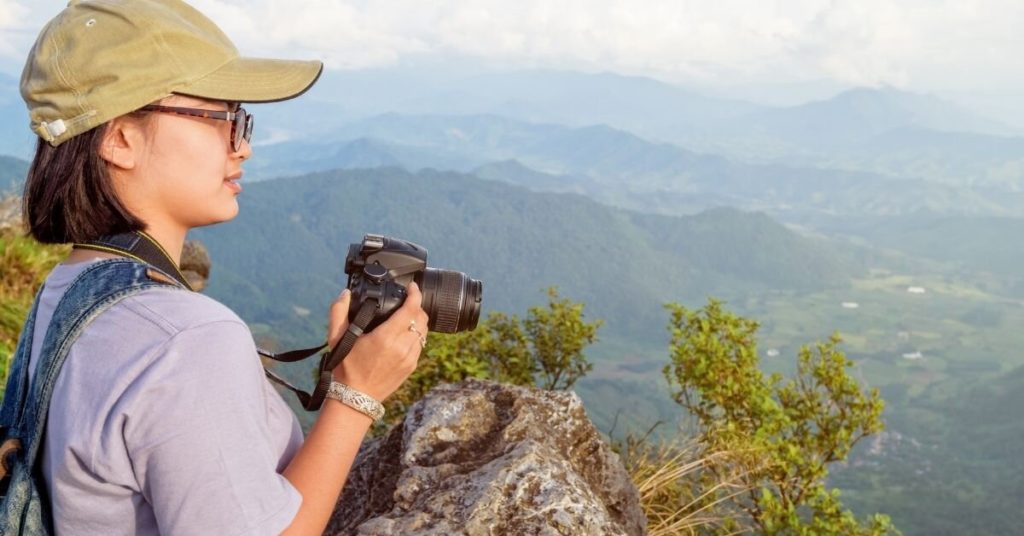Straightforward ways of refreshing your current photography abilities, the following photography tips should assist you with building a solid establishment. Remember, nonetheless, that Photography is a workmanship you’ll never truly be ‘done’ learning.
How can beginners enjoy clicking the best photography

The most ideal way of continuing to improve is to rehearse regularly, commit errors and be available to gaining from others, regardless of whether they’re grounded picture takers or novices to the specialty.
1. Figure out how to hold your camera appropriately
This might sound self-evident, however, numerous New photographic artists don’t hold their camera effectively, which causes camera shake and foggy pictures.
Mounts are obviously the most ideal way of forestalling Camera Shake however, since you will not be utilizing a stand except if you’re shooting in low light circumstances, hold your camera appropriately to keep away from superfluous development.
2. Begin shooting in RAW
Crude is a document design like JPEG, yet dissimilar to jpeg. It catches all the picture information recorded by your camera’s sensor as opposed to packing it.
Eventually, nonetheless, shooting in RAW can change the nature of your pictures, so if you have the opportunity and space, it’s most certainly great.
3. Comprehend the openness triangle
In spite of the fact that it can appear to be somewhat overwhelming from the start, the openness triangle just alludes to the three most significant components of openness; ISO, gap, and shade speed.
- Gap: Aperture is the opening in your focal point and controls how much light breaks through to the camera’s sensor. A more extensive opening (showed by a lower f-number) lets all the more light through, while a limited gap (demonstrated by a higher f-number) lets less light through.
- Screen speed: Shutter speed controls what amount of time the shade stays open when you require for an image. The more drawn out the screen stays open, the more light breaks through to the camera’s sensor.
4. Wide gap is best for representations
To more readily see what the opening means for your pictures, change to Aperture Priority Mode (Av or A) and take a stab at making a few efforts with various gaps. Assuming you need to get a few hints and motivation about taking pictures, head over to our meetings with photographic artists Reme Campos, Sian Davey, and Samir Hussein.
5. Limited opening is best for scenes
Investigate our novice’s manual for profundity of field for additional clues and tips.
6. Figure out how to utilize Aperture Priority and Shutter Priority modes
Assuming you need to branch out of programmed mode however don’t feel sufficiently certain to change to manual yet, Aperture Priority Mode (An or Av) and Shutter Priority Mode (S or Tv) are two exceptionally helpful choices that are accessible on most cameras and will give you more control without being excessively confounded.
Gap Priority Mode allows you to choose the opening you wish to utilize and afterward, the camera changes the shade speed appropriately. So, for example, assuming you’re shooting a picture and need to obscure the foundation, you could just choose a wide gap and let the camera sort out what screen speed is suitable.
In Shutter Priority Mode, you select the shade speed you need to utilize and the camera will choose the opening for you.
You need to have an unmistakable chance of your canine dashing towards you, you can choose a quick shade speed and let the camera pick the gap for you.
7. Try not to be reluctant to raise the ISO
Numerous photographic artists attempt to try not to at any point shoot in high ISO as they’re apprehensive it will prompt grainy-looking photographs or ‘commotion.’ But while the facts confirm that utilizing higher ISO can prompt lower picture quality, there’s an appropriate setting for everything.
On the off chance that you can’t bring down your screen speed because of movement obscure and a stand isn’t a choice, it’s smarter to get a sharp photograph with a cycle of commotion than no photograph by any means, and you’ll have the option to eliminate a ton of clamor in post handling at any rate.
Also, camera innovation has worked on such a huge amount lately that it’s presently very conceivable to create astounding photos even at ISO 1600, 3200, 6400, or higher.
One way of limiting commotion when shooting at higher ISOs is to utilize a more extensive gap sooner rather than later. Marginally overexposing your picture can likewise help, since making light regions hazier in post handling will not expand commotion, though making dull regions lighter most certainly will.
8. Make a propensity for checking the ISO before you begin shooting
Finding that you’ve coincidentally shot an entire series of pictures in ISO 800 on a splendid bright day can be amazingly disappointing, particularly if the photographs were taken. On the other hand, make a propensity for resetting this each time you’re prepared to return your camera to its sack.
9. Be cautious with your on-camera streak
If you don’t watch out, utilizing your camera’s underlying glimmer around evening time or in low light can prompt some undesirable impacts like red eyes and cruel shadows.
Now and then, notwithstanding, there may essentially not be sufficient light, and if you don’t have off-camera lighting, you’ll be left with no decision except for to utilize the implicit blaze.
Second, you can have a go at diffusing the light from the blaze by putting something over it. Getting a piece of paper or hazy scotch tape ov.
Conclusion
While you’ll ultimately foster your own specific manner of holding the camera, you ought to consistently hold it with two hands.
If you really wanted additional solidness, you can incline in a tough spot or hunker down on your knees, however in case there’s nothing to incline toward, embracing a more extensive position can likewise help.







